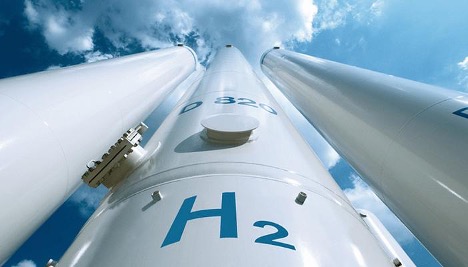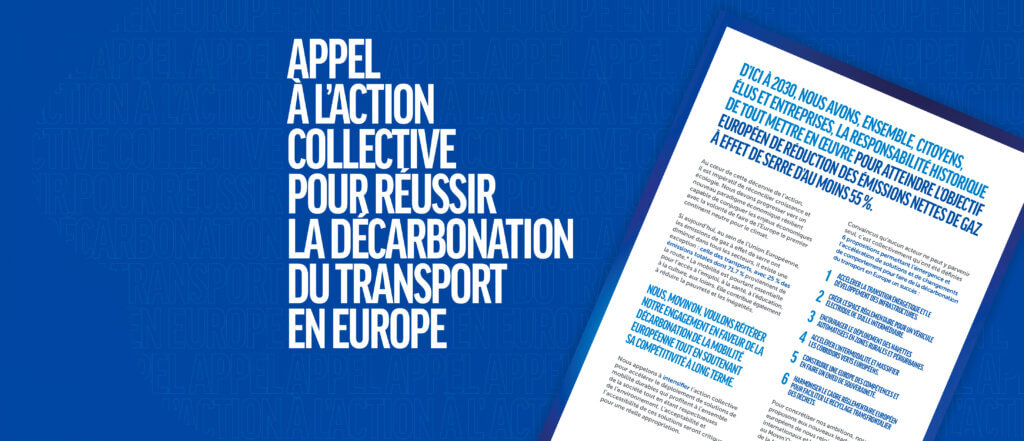Hydrogen Fuel From Waste + Carbon Capture = Decarbonization
The Biden Administration has established Regional Hydrogen Hubs and selected six research projects to receive US$9.3 million in federal funding for technologies that will make clean hydrogen more available and affordable for electricity generation, industrial decarbonization, and transportation.

The Department of Energy’s (DOE) Office of Fossil Energy and Carbon Management (FECM) announced the new grants on June 11, 2024, saying that the six selected projects will help their communities by decreasing the volume of wastes sent to landfills and locating new waste-to-energy plants in these communities, creating local economic opportunities.
“More than 95 percent of the hydrogen produced in the United States comes from natural gas without the capture and geologic storage of carbon dioxide,” Brad Crabtree, assistant secretary of fossil energy and carbon management, said.
“BY INVESTING IN PROJECTS THAT ADVANCE THE USE OF WASTE FEEDSTOCKS AND INTEGRATING HYDROGEN-BASED SYSTEMS WITH CARBON CAPTURE, WE ARE HELPING REDUCE THE CARBON FOOTPRINT AND COSTS TO PRODUCE CLEAN HYDROGEN.” – Brad Crabtree, Assistant Secretary of Fossil Energy and Carbon Management
Clean hydrogen can be used to enable zero or near-zero emissions in chemical and industrial processes, integrated clean energy systems, and transportation.
The U.S. greenhouse gas economy-wide emissions target is a 50-52 percent reduction from 2005 levels by 2030, identifying least-cost emission reduction actions across the electric sector, transport, buildings, and industry.
Regional Clean Hydrogen Hubs
The U.S. Department of Energy announced in October 2023 the investment of US$7 billion (€6.47 bn) to develop seven Regional Clean Hydrogen Hubs across the country to advance the hydrogen economy and accelerate the commercial-scale deployment of low-cost, clean hydrogen.
- – Mid-Atlantic Clean Hydrogen Hub: Pennsylvania, Delaware, New Jersey
- – Appalachian Regional Clean Hydrogen Hub: West Virginia, Ohio, Pennsylvania
- – California Hydrogen Hub: Alliance for Renewable Clean Hydrogen Energy Systems
- – Gulf Coast Hydrogen Hub: HyVelocity Hydrogen Hub; Texas
- – Heartland Hydrogen Hub: Minnesota, North Dakota, South Dakota
- – Midwest Hydrogen Hub: Illinois, Indiana, Michigan
- – Pacific Northwest Hydrogen Hub: Washington, Oregon, Montana
The seven selected regional clean hydrogen hubs are expected to catalyze more than $40 billion in private investment and create tens of thousands of good-paying jobs, bringing the total public and private investment in hydrogen hubs to nearly $50 billion.
“That’s equivalent to the amount of energy currently used by every bus, every plane, every train and every ship in the U.S. combined,” Energy Deputy Secretary David Turk said on a call with reporters to discuss the plan.
Roughly two-thirds of total project investment are associated with green, electrolysis based, production within the hubs. Several of the hubs were developed in close partnerships with labor unions. The selected hydrogen hubs are committed to robust Community Benefit Plans to ensure focus on local priorities and allow all communities to benefit from the clean energy transition.
Anna Menke, senior hydrogen hubs manager at the nonprofit Clean Air Task Force, called the creation of regional hydrogen hubs, “…a critical first step in decarbonizing existing carbon-intensive hydrogen applications such as ammonia production for fertilizers and petrochemicals refining and in decarbonizing new applications of hydrogen in hard-to-abate sectors, including heavy-duty trucking, shipping, and aviation.”
Collectively, the hubs aim to produce more than three million metric tons of clean hydrogen a year, achieving nearly one third of the 2030 U.S. clean hydrogen production goal. Together, the seven Hydrogen Hubs will eliminate 25 million metric tons of carbon dioxide emissions from end uses each year – an amount equivalent to combined annual emissions of over 5.5 million gasoline-powered cars. The nearly $50 billion investment is one of the largest investments in clean manufacturing and jobs in American history.
Now multistate coalitions throughout the country are creating diverse teams across every phase of the hydrogen value chain. They will bring together low-carbon energy resources, existing energy infrastructure, and proximity to regional markets in integrated hydrogen networks at scale.
The Many Paths to Hydrogen Production
Fossil fuels, such as natural gas and coal, can be converted to produce hydrogen, and the use of carbon capture, utilization, and storage (CCUS) can reduce the carbon footprint of these processes.
CCUS technologies remove carbon dioxide (CO2) from industrial and power plant emissions, transport it, usually by pipeline, and then securely store it. Possible storage sites include depleted oil or gas fields, rocks containing unpotable saline water, or storage in oilfields during enhanced oil recovery operations, which differs from fracking.
Captured CO2 can be used directly or as a feedstock in industrial or chemical processes to produce valuable carbon-containing products. This can result in a portion of the CO2 being permanently stored, for example, in concrete that has been cured using CO2, says Andy Lane, vice president of CCUS solutions at the British petroleum company bp.
Hydrogen can also be produced from low carbon and renewable resources such as biomass grown from non-food crops, and by splitting water using renewables for electricity.
One kilogram of hydrogen has the same energy content as one gallon of gasoline, on a lower heating value basis.
A colorless gas, hydrogen is labeled by color to indicate how it was produced.
Green hydrogen is made by using clean electricity from surplus renewable energy sources, such as solar or wind, to electrolyze water. This electrochemical reaction splits water into its components of hydrogen and oxygen, emitting none of the greenhouse gas carbon dioxide in the process.
Green hydrogen currently makes up a small percentage of the overall hydrogen produced in the United States, because production is expensive. Just as energy from wind power has gone down in price, green hydrogen is expected to come down in price as it becomes more common.
Blue hydrogen is produced mainly from natural gas, using a process called steam reforming. The output is hydrogen, and carbon dioxide is produced as a by-product. So, the definition of blue hydrogen includes the use of carbon capture and storage.
Blue hydrogen is sometimes described as low-carbon hydrogen, as the steam reforming process doesn’t actually avoid the creation of greenhouse gases.
Currently, the most common form of hydrogen production is labeled grey hydrogen. This hydrogen is produced from natural gas, or methane, using steam methane reformation but without capturing the greenhouse gases emitted by the process. Grey hydrogen is essentially the same as blue hydrogen, but without the use of carbon capture and storage.
To see the characteristics of the other hydrogen color labels: black or brown, pink, turquoise, yellow, and white, click here to visit the Society of Professional Engineers.
Natural Gas Reforming: Hydrogen can be produced from natural gas using high-temperature steam. This process, called steam methane reforming, accounts for about 95 percent of the hydrogen used today in the United States.
Another method, called partial oxidation, produces hydrogen by combusting methane in air. Both produce a synthesis gas or syn gas, which is then reacted with more steam to produce a higher hydrogen content gas stream.
Gasification: Coal or biomass is converted into gaseous components by applying heat under pressure and in the presence of air/oxygen and steam. A series of chemical reactions produces syn gas, which is then reacted with steam to produce a gas stream with an increased hydrogen concentration that can be separated and purified.
With carbon capture and storage, hydrogen can be produced directly from coal with near-zero greenhouse gas emissions. Since growing biomass consumes carbon dioxide from the atmosphere, producing hydrogen through biomass gasification results in near-zero net greenhouse gas emissions without carbon capture and storage.
Renewable Liquid Reforming: Biomass can be processed to make renewable liquid fuels, such as ethanol or bio-oil, which are convenient to transport and can be reacted with high temperature steam to produce hydrogen at or near the point of use.
Electrolysis: An electric current splits water into hydrogen and oxygen. To minimize greenhouse gas emissions, electricity generation using renewable energy technologies such as wind, solar, geothermal, and hydroelectric power, nuclear energy, or natural gas and coal with carbon capture, utilization, and storage are preferred.
Heat from industrial processes such as a nuclear reactors can be used to improve the efficiency of electrolysis to produce hydrogen. By increasing the temperature of the water, less electricity is required to split it into hydrogen and oxygen, which reduces the total amount of energy required.
Solar Thermochemical Water-Splitting: Another water-splitting method uses high temperatures generated by solar concentrators – mirrors that focus and intensify sunlight – to drive a series of chemical reactions that split water into hydrogen and oxygen. All of the intermediate process chemicals are recycled within the process.
Photoelectrochemical: Hydrogen can be produced directly from water using sunlight and a special class of semiconductor materials that absorb sunlight and use the light energy to directly split water molecules into hydrogen and oxygen.
Biological: Certain microbes, such as green algae and cyanobacteria, produce hydrogen by splitting water in the presence of sunlight as a byproduct of their natural metabolic processes. Other microbes can extract hydrogen directly from biomass.
Cost is the Challenge
The greatest hurdle for hydrogen production from renewable resources is providing hydrogen at lower cost. For transportation fuel cells, hydrogen must be cost-competitive with conventional fuels and technologies on a per-mile basis. This means that the cost of hydrogen, regardless of the production technology, must be less than $4/gallon gasoline equivalent (0.98 euros per litre) untaxed and dispensed.
To reduce overall hydrogen cost, research is focused on improving the efficiency and lifetime of hydrogen production technologies as well as reducing the cost of capital equipment, operations, and maintenance.
Research Directions
Hydrogen production technologies are in various stages of development. Some technologies, such as steam methane reforming, are already commercial and can be used in the near-term. Others, such as solar thermochemical water-splitting, Photoelectrochemical, and biological are in early stages of laboratory development and considered potential pathways for the longer term.
Related research includes developing new hydrogen delivery methods and infrastructure, improving carbon sequestration technology to ensure that coal-based hydrogen production releases almost no greenhouse gas emissions, and improving biomass growth, harvesting, and handling to reduce the cost of biomass resources used in hydrogen production.
Gasification of biomass, plastics, common household garbage and other wastes – coupled with carbon capture and storage strategies to address greenhouse gas emissions – is expected to be a low-cost, environmentally friendly route to producing clean hydrogen.
The selected projects focus on advancing hydrogen systems that convert a variety of waste feedstock materials into clean energy with superior environmental performance to help achieve the Biden-Harris Administration’s ambitious decarbonization goals.
The U.S. Nationally Determined Contribution as part of the Paris Agreement commits the country to achieve 50-52 percent reductions in economy-wide net greenhouse gas emissions by 2030 relative to 2005 levels. Reaching this goal requires the U.S. to roughly triple the rate of decarbonization compared to reductions in the previous 15 years, according to the Electric Power Research Institute in its White Paper, “Strategies and Actions for Achieving a 50% Reduction in U.S. Greenhouse Gas Emissions by 2030.”
The six projects selected by the U.S. Energy Department under this latest funding opportunity are expected to advance the performance, reliability, and flexibility of existing and novel methods to produce, transport, store, and use hydrogen.
These six projects were chosen for funding:
GTI Energy, located in the Chicago suburb of Des Plaines, Illinois, will demonstrate a gasifier feed control system that produces clean hydrogen from biomass and waste feedstocks.
A recent rebrand of the Gas Technology Institute, GTI Energy is an American nonprofit research and development organization focused on the natural gas industry.
GTI Energy specializes in Regional Clean Hydrogen Hubs (H2Hubs) that will serve as the foundation for a national network of commercially viable hydrogen while delivering cleaner air and improved public health, high-paying jobs, and community-based grants for business growth in disadvantaged areas.
Funded by President Joe Biden’s Bipartisan Infrastructure Law, the seven H2Hubs are expected to kickstart a national network of clean hydrogen producers, consumers, and connective infrastructure supporting the production, storage, delivery, and use of clean hydrogen.
“UNLOCKING THE FULL POTENTIAL OF HYDROGEN – A VERSITILE FUEL THAT CAN BE MADE FROM ALMOST ANY ENERGY RESOURCES IN VIRTUALLY EVERY PART OF THE COUNTRY – IS CRUCIAL TO ACHIEVING PRESIDENT BIDEN’S GOAL OF AMERICAN INDUSTRY POWERED BY AMERICAN CLEAN ENERGY, ENSURING LESS VOLATILITY AND MORE AFFORDABLE ENERGY OPTIONS FOR AMERICAN FAMILIES AND BUSINESSES.” – Jennifer Granholm, U.S. Secretary of Energy
“With this historic investment, the Biden-Harris Administration is laying the foundation for a new, American-led industry that will propel the global clean energy transition while creating high quality jobs and delivering healthier communities in every pocket of the nation,” Secretary Granholm said.
In total, the H2Hubs are expected to collectively produce three million metric tons of hydrogen annually, reaching nearly a third of the 2030 U.S. production target and lowering emissions from hard-to-decarbonize industrial sectors that represent 30 percent of total U.S. carbon emissions.
Together, they will reduce 25 million metric tons of carbon dioxide (CO2) emissions from end-uses each year – an amount roughly equivalent to combined annual emissions of 5.5 million petrol-powered cars – and create and retain tens of thousands of good-paying jobs across the country while supporting healthier communities.
DOE Funding: $3,984,275,
Non-DOE Funding: $1,000,334
Total Value: $4,984,609
Lehigh University in the former steel producing city of Bethlehem, Pennsylvania will demonstrate a system that produces clean hydrogen from biomass, waste plastics, and legacy coal waste feedstocks.
Bethlehem Steel (1857–2003), was once the second-largest steel producer in the United States,
Now, Lehigh University, in a collaborative effort with Energy Research Company, University of Utah, Idaho National Laboratory, and SpG Consulting, is being funded to demonstrate the feasibility of laser induced breakdown spectroscopy (LIBS) integrated with machine learning.
This technology reveals the characteristics of feedstock streams into gasifier systems that produce clean hydrogen with biomass, waste plastics and legacy coal waste as the feedstocks.
The project will also perform a techno-economic analysis of the proposed technology integrated with hydrogen-producing gasifiers.
DOE Funding: $2,954,021
Non-DOE Funding: $738,502
Total Value: $3,692,523
The Stevens Institute of Technology, of Hoboken, New Jersey, will develop a wireless sensor system powered by artificial intelligence (AI) to enhance the competitiveness of gasification-based systems utilizing challenging mixed solid feedstocks to produce hydrogen.
The sensor system will be designed to sense high temperature, pressure, strain, hydrogen concentration, carbon monoxide concentration, carbon dioxide concentration and fouling severity, simultaneously, in what is known as a multi-functional sensor system.
The sensor signals are transmitted to a remote station wirelessly and analyzed to determine the condition of a gasification-based system in real time.
The analysis of sensor data will be performed with AI methods based on deep learning techniques. A deep learning model will be trained to process and interpret sensing signals, to enhance the competitiveness of gasification-based systems utilizing challenging mixed solid feedstocks to produce hydrogen.
DOE Funding: $500,000
Non-DOE Funding: $126,366
Total Value: $626,366
The University of Connecticut in Storrs, Connecticut will develop a new class of sensors intended to improve the efficiency of solid waste and biomass feedstock-based gasifiers for hydrogen production.
The university intends to develop a new class of nanostructured array (nanoarray) monolithic sensors for in-situ and real-time monitoring of surface particulate fouling on internal components of solid waste/biomass feedstock-based gasifiers such as heat exchanger tubes.
Advantages include robust sensor performance with low pressure drops, easy customization, superior heat transfer, and easy tunability.
An ultra-low-power wireless mesh communication technology will interconnect the proposed surface fouling monitoring sensors.
DOE Funding: $499,998
Non-DOE Funding: $125,000
Total Value: $624,998
The Oklahoma City, Oklahoma branch of the American energy company Baker Hughes will integrate novel and commercial state-of-the-art technologies to demonstrate a hydrogen-blended natural gas turbine system coupled with carbon capture.
Based in Houston, Texas, Baker Hughes is one of the world’s largest oil field services firms. The company plans to integrate novel and commercial state-of-the-art technologies to demonstrate a grid-flexible hydrogen-blended natural gas turbine system with innovative point source carbon capture at lab scale.
The project will validate digital twin architecture for blue hydrogen with carbon capture from natural gas turbines, with variable renewable energy loads as input, while achieving the Department of Energy target of a 95 percent carbon dioxide capture rate.
DOE Funding: $691,457
Non-DOE Funding: $196,250
Total Value: $887,707
The Electric Power Research Institute of Palo Alto, California will develop a model to assess the net-zero capability and performance of new and existing gas turbine combined cycle plants when operated with hydrogen fuel blending and carbon capture.
The research institute intends to create a cohesive Hydrogen Fuel Blend, Gas Turbine Combined Cycle with Carbon Capture (H2-GTCC-CC) digital twin model for use by the energy community to assess the net-zero capability and performance of new and existing gas turbine combined cycle plants when operated with hydrogen fuel blending and carbon capture under flexible operations.
The project will result in a web-based tool, allowing both experts and non-experts to create their own H2-GTCC-CC digital twins and evaluate the ability of specific sites to enhance operational efficiency, optimize flexible operations, and support the transition to clean energy to meet net-zero goals using hydrogen blend fuels and carbon capture technology.
DOE Funding: $700,000
Non-DOE Funding: $175,000
Total Value: $875,000
DOE’s National Energy Technology Laboratory and the DOE’s Office of Fossil Energy and Carbon Management will manage the selected projects.
Priority areas of work include carbon capture, carbon conversion, carbon dioxide removal, carbon dioxide transport and storage, hydrogen production with carbon management, methane emissions reduction, and critical minerals production.
Since January 2021, FECM has committed US$138 million to projects that explore new, clean methods to produce hydrogen and to improve the performance of hydrogen-fueled turbines.
These projects support DOE’s Hydrogen Shot initiative, which seeks to reduce the cost of clean hydrogen by 80 percent to $1 per kilogram in one decade to grow new, clean hydrogen pathways throughout the United States.
Toute l’actualité de Movin’On
dans votre boîte mail
Auteur
Partager
Tweets de @movinonconnect
Movin'On 2035 TODAY EP02 - Circular Economy & Competitivity
Movin’On 2035 TODAY EP01 – Fair Mobility for All https://x.com/i/broadcasts/1yNxagBrWZbGj
✨ THAT'S A WRAP!
Movin'On Summit 2024 has just concluded in Brussels!
More than 350 leaders and experts in sustainable mobility gathered to exchange ideas, collaborate, and share their vision for desirable and decarbonised mobility in Europe. Together, we explored ways to build…
🔴 Live from #MovinOnSummit2024
@AshaSumputh has just invited Denis Machuel, CEO at @AdeccoGroup and Florent Menegaux, President of the @Michelin Group & President of Movin'On
L’actualité de la mobilité durable
Découvrez les dernières tendances, des analyses thématiques et nos prochains rendez-vous






